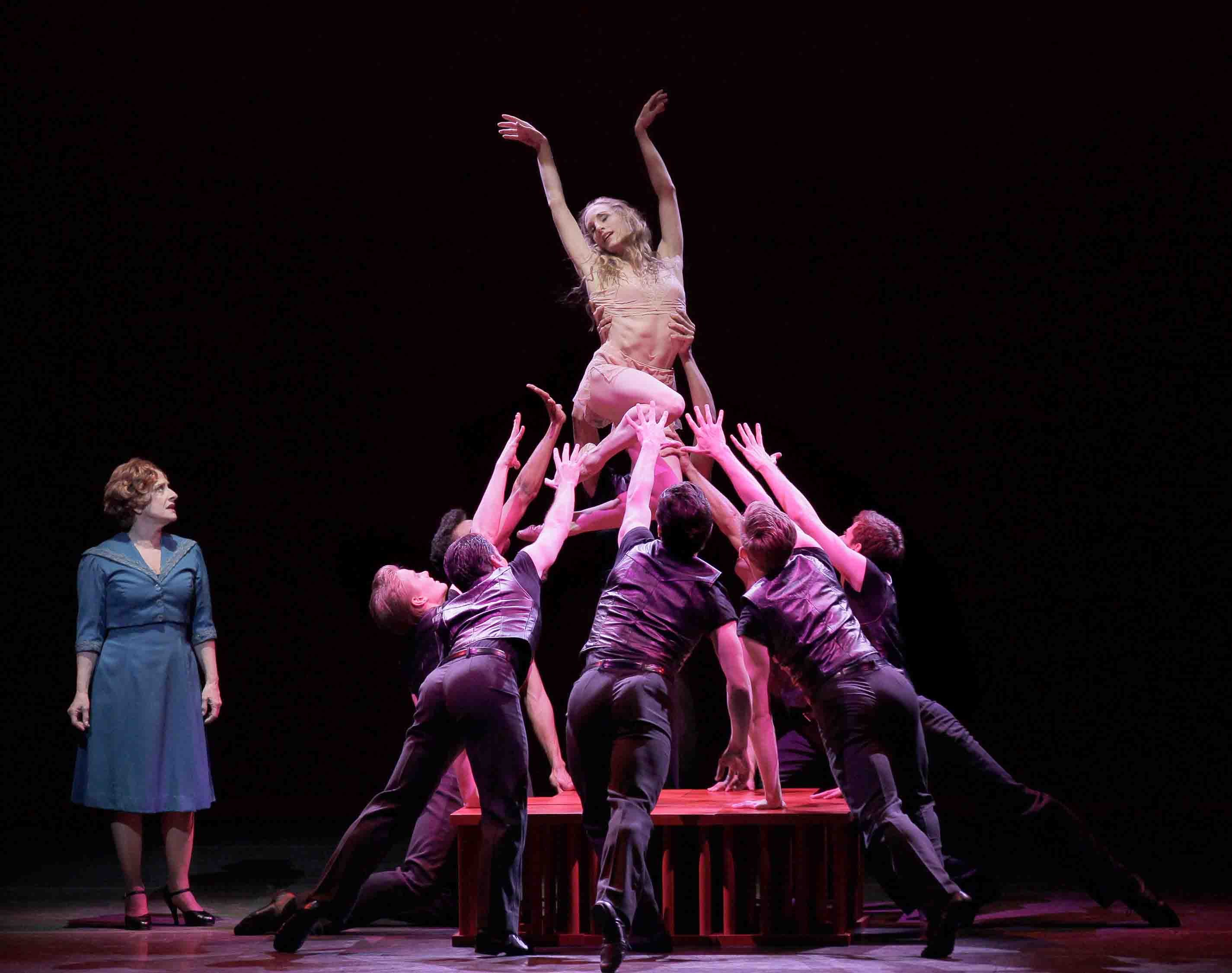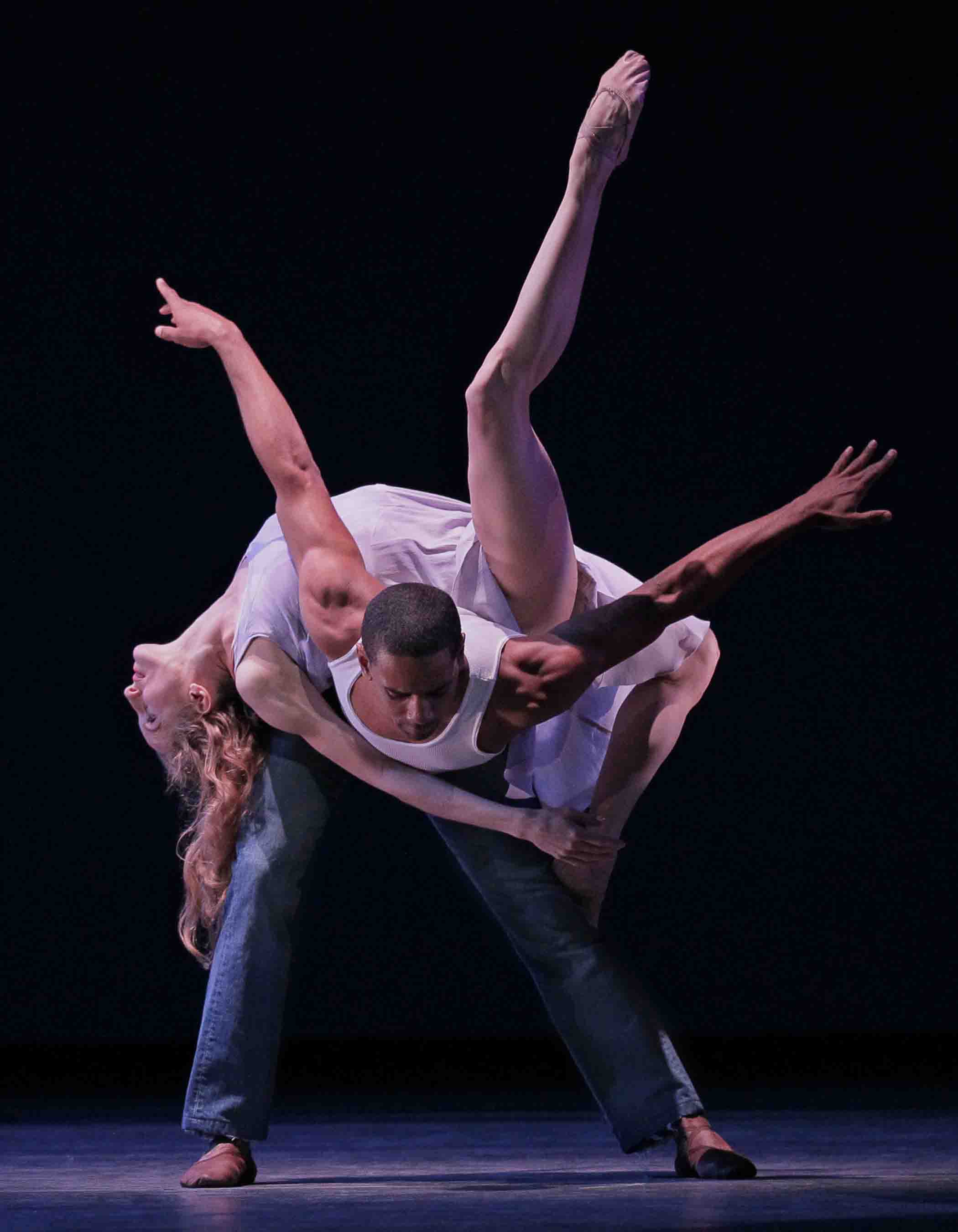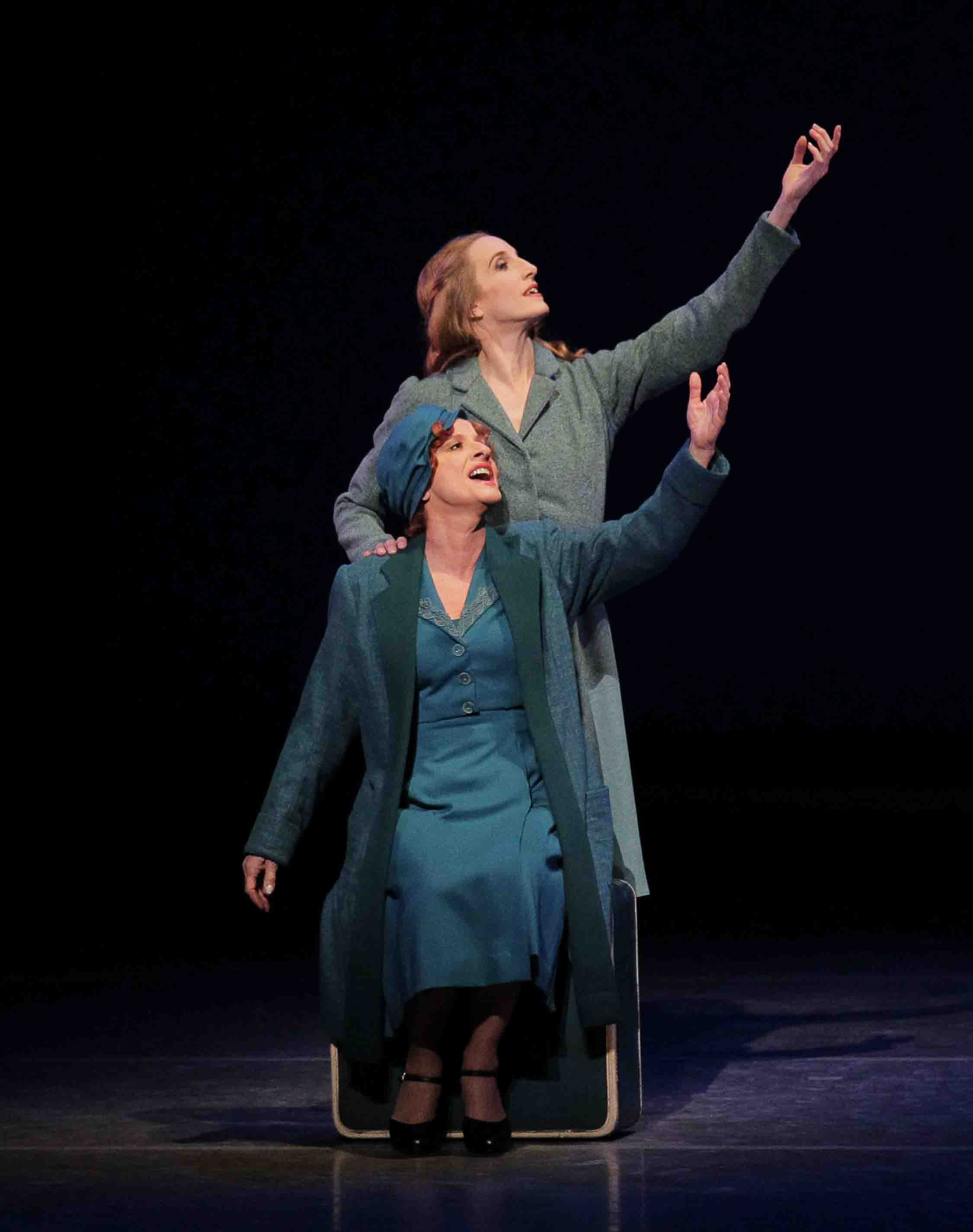New York City Ballet: The Seven Deadly Sins / David H. Koch Theater, Lincoln Center, NYC / March 11, 12, 13 14, & 15, 2011

Working Girls: Patty LuPone, Wendy Whelan, and company men in Lynne Taylor-Corbett’s The Seven Deadly Sins
Photo: Paul Kolnik
New York City Ballet’s spring season gala on May 11 focused on the company’s new production, The Seven Deadly Sins, choreographed by Lynne Taylor-Corbett, credit-wise a practiced hand at dance-theater. It looks pretty much born yesterday, but the Kurt Weill – Bertolt Brecht cabaret-style melding of music, dance, and spectacle has a history both with George Balanchine and the company.
Balanchine produced his first version of the piece in Paris for Les Ballets 1933 in that year. It was far from universally acclaimed, but the choreographer never forgot it. In 1958 he made a revised version for the 21-year-old Allegra Kent, a flexible creature of fantasy who had captured his imagination. Kent danced the lithe Anna 2, a naive idealist. Lotte Lenya, Weill’s wife, famous for a rough-edged voice that resonated tough experience, sang Anna 1, the cynical tyrant. Plot-wise, the two are treated as sisters, but are designed to represent the morally conflicting halves of a single person.
Back home in Louisiana, their righteous, poverty-stricken family–mom, pop, and two brothers, all sung by men–send the young women across America, the land of opportunity, with the mission of earning enough money to buy them a proper house to replace their poor people’s shack on the banks of the Mississippi.

Sweet Love Remembered: Whelan and Craig Hall
Photo: Paul Kolnik
The project takes a Biblical seven years and visits to seven metropolises, during which the white-souled Anna repeatedly fails as a dancer (indeed, an artist of any kind) and is forced to eke out the required funds as a prostitute. Miraculously, she retains her guilelessness, though the degradation finally kills her.
I saw the 1958 production while I was still at school. I remember Kent and Lenya distinctly, no doubt because each was unforgettable in her own way. I don’t recall many specifics about the production, but I can still feel–or is it taste?–its atmosphere: decadent, sordid, sinister, yet unable to penetrate Anna 2’s natural purity.
Taylor-Corbett’s take on the material is a strangely tame revue. It has no atmosphere and no affecting drama. Even the melodrama falls flat. Dire and ironic situations are acted out–say, Anna 2’s submitting to sex with a rich john, while the true love she’s found waits for her in the bed of a look-alike hotel room next door–yet nothing ever really seems to happen to anyone. This is not sound theatrical policy and certainly not good for a production that requires a heavy sardonic tone.

Sisters Under the Skin: LuPone and Whelan
Photo: Paul Kolnik
Patti LuPone, a Broadway-type singer with a dynamo voice, and Wendy Whelan, City Ballet’s senior ballerina, carried out their assignments well, Whelan working in her airy lyrical mode to reflect her character’s unimpeachable innocence. However, neither was magical. Nothing they did was likely to arouse the audience’s empathy. Similarly Beowulf Boritt’s sets and Judanna Lynn’s costumes, attractive on their own terms, failed to evoke the sleazy and mordant tone of the culture they needed to describe.
I could register other complaints, such as the distracting fact that it’s often hard to connect the sin named in the program with the representation it’s given on stage and that Anna 2’s physical modesty is overdone to the point of monotony. Still, none of this would matter if the show had only taken fire instead of remaining dutifully workmanlike. Instead it’s like a coloring book in which the crayon has been forbidden to venture outside the lines.
© 2011 Tobi Tobias




Yes, how can a production which was surely so costly have such little impact? It’s a mystery.
I’m not surprised that Lynne Taylor-Corbett’s version of “The Seven Deadly Sins” was bland. She’s got the depth of a birdbath.
It saddened me to read the program essay in which Wendy Whelan talks about how wonderful it was to work with a strong director-choreographer, who developed characters and motivation. Sometimes I think NYCB dancers are so cloistered, they don’t know what’s out there. Taylor-Corbett must seem innovative to them, in terms of getting playful and sexy and acting out.
New York City Opera a bit over a decade ago got it closer to right, even without a first-rank dancer. It was mordant, yes, and more memorable.
Your last graph nails it, Tobi.
Lynne Taylor-Corbett’s production of “The Seven Deadly Sins”
was craftsmanlike but there was so little Brecht and Weill that I thought it was designed for a convent. And the choreography was so elemental that it wasted the great NYCB talents like Whelan, Mearns, and Hall. Balanchine’s elegant “Vienna Waltzes,” which followed, seemed energetic and so refreshing.
Tobi, as usual, the criticism is right on target. You are, however, more generous with Patti LuPone than I would be, since I felt her singing was glitzy and Broadway, but not what Weill wrote, nor what Lotte Lenya, or even Marianne Faithful have performed.
Indeed, what really annoyed me about this production was that it lacked the political attack and satire that is a Brecht/Weill hallmark, and made it seem as though the ballet was designed for a commercial audience with no critical facilities. Talk about the triumph of capitalism in Amerika: City Ballet’s “Seven Deadly Sins” personified Brecht’s critique of capitalism without knowing it. Now if only someone would take this knowledge and do a real “Seven Deadly Sins,” politics, edginess and satirical bite intact, that would be a great evening. More dance would also help.
I thoroughly agree with your assessment of “The Seven Deadly Sins.” I found it pallid and weak despite Patti LuPone’s compelling gravelly voice and Wendy Whelan’s ethereal dancing. Sins indeed! But the level–the dedication, technique, and intensity–of the dancing throughout the evening (I was there Saturday night) was simply breathtaking. I especially loved the “Tombeau de Couperin,” with which the program started.
I’m in Barcelona and just now saw your review of “The Seven Deadly Sins.” You write forcefully and persuasively, as always. But so much crucial information is missing that the result, for once, is unreliable.
Was the work sung in the original language? If not, could the translation be partly responsible for your confusion and disappointment? Who conducted and what about the playing?
This is specialist theater music and there are recordings readily available–from Lenya herself to Ute Lemper and beyond–that could have helped you be more specific about what LuPone lacked. She is, after all, generally regarded as the greatest musical theater star of this generation, triumphant in a range of powerful roles from Evita to Mama Rose in “Gypsy.” And she has sung Brecht/Weill before. At the very least, you owed her and the reader one sentence all by herself explaining your reaction to her performance.
Your review is just as incomplete regarding the work itself. The original title is (in translation) “The Seven Deadly Sins of the Middle Class” and it satirizes that class by making money the root of all virtue. So when the dancing Anna wants to sleep with the man she loves instead of a man who’ll pay her, she’s guilty of Lust. And (in a still-timely section) when a dancer under contract to remain painfully thin breaks that contract by eating normally when she’s hungry, she’s guilty of Gluttony. Some sense of this moral turnabout ought to have informed your analysis.
Obviously we are all nostalgic about our first “Hamlet,” “Swan Lake,” “West Side Story,” “Stravinsky Violin Concerto,” and we measure subsequent interpretations and performances against our memories. But nostalgia can be a trap and I believe that your review represents a case in point. It may well be that the people who loved “The Seven Deadly Sins” in 1933 were as disappointed with the 1958 staging as you are with the 2011 remake. It’s also possible that a reconstruction of the 1958 production would leave you cold, since your admittedly indistinct recollections don’t account for the work itself–its expressive intentions and achievements. You may be absolutely right about what you dislike in the new version, but so much remains unsaid that–this time at least–I simply can’t trust you.